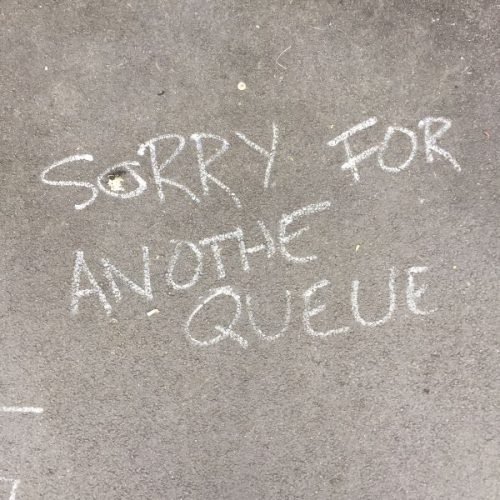
Unmasking the everyday: part two
Unmasking the everyday explored some of the critical questions thrown up by mass isolation and its impacts on time, space and ‘the everyday’. The following is slightly more practical in nature, offering just a few thoughts on how you might go about using the opportunities of the moment to open up how you go about your creative activities at a time when everything seems be closing down.
The default OCA message is that students should always take creative risks, but this quite clearly needs to be balanced alongside the current need to take absolutely no chances when it comes to your – and everybody else’s – safety and wellbeing. Don’t do anything to put yourself at risk, but do embrace the challenge – and it is a challenge – of making work in the familiarity of your most everyday spaces.
In no particular order:
- Make more of your smartphone’s camera and do not see it as a lesser device. Have it on hand and ready to be used all of the time, and get used to documenting things that would normally seem too dull/ irrelevant/ trivial to photograph. Smartphones have allowed photography to reach parts of ‘the everyday’ that were hitherto impossible. Take advantage of this. The fairly widespread tendency to casually dismiss cameraphones is really shortsighted: these are tools that have opened the game up in a genuinely paradigm-shifting way. Just use them with the care that you would your ‘proper’ camera.
- Photograph from – and through – windows, whether these are in your home or from your car. Adding a layer of dust, grime, noise or distortion might actually transform how you think about and look at the notional subject matter. nb, it goes without saying that you should not be making photographs while you are driving. Your local A&E department, not to mention your fellow road users, would be very grateful for this.
- Don’t be so slavishly tied to notions of ‘good technique’ and ‘good taste’, and experiment with abstract and alternative approaches. Just be mindful of clearly explaining your decisions in your assignment’s rationale, and do exercise good judgement: ‘ker-razy’ images are all well and good, but it definitely helps if you’re able to bring them together into something meaningful and coherent.
- Do you even need to use a camera? Recontextualising existing imagery is something to consider and, done with skill and imagination, the results can be pretty spectacular – take a look at the work of Mishka Henner and Jon Rafman and see what you think. There are mountains of really interesting images circulating at the moment, whether they’re the endless news updates or the ‘portraits’ that are on your laptop/ tablet/ mobile’s screen every time you speak online with family and friends. Curate them into something that’s consistent with your view of all this and that will offer another angle on this strangest of times.
- Take a journey around a particular room within your home. Make work about this. Submit it to Stephen Chase and his A Journey Around My Room project.
- Read, read and then read some more. Carefully looking at material appropriate to this level of study is essential. Make more of the UCA’s online library and instead of starting any research with Google, use academic journal websites. This one is particularly good, and a potentially key starting point for any topics that you want to develop a more critical understanding of.
- Write, write and then write some more. Academic writing is something that you should look to develop as much as your visual skills. HE6’s Contextual Studies comprises a significant part of your overall degree classification, so making as much of the opportunities that precede it will help you to be prepared. Any time that you look at or read any useful/ interesting/ inspiring/ maddening material, think about producing a 3-500 word blog post that critically reflects on it. Getting into the habit of this will yield longterm dividends in terms of your research, writing and critical thinking skills and will, crucially, have an impact on the ideas you have and the images that you subsequently produce.
Ultimately, and perhaps the hardest thing to do here – and at anytime – is to let go of any preconceptions of who/ what you are, were or might be as a practitioner. Try new things. Expand your palette. Use new equipment. Reconsider old equipment that you’d ‘moved on’ from. Everything is always up for grabs. Always. Don’t stand still: the race is long, the race is hard, but ultimately it is only with yourself.
|
|







Good advice to read more and write more but don’t just read and write the academic stuff. Remember there are stories and poems, particularly poems, which are doing the something very similar to photographs.
Just writing a review of two books, one by the poet George Szirtes whose mother was a photographer, The Photographer at Sixteen (Quercus 2019) and A Bargain with the Light: Poems after Lee Miller (Hercules 2017). by Jacqueline Saphra. Highly recommend both to photographers, poets and life-writers.